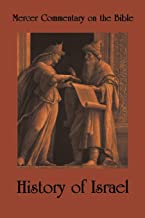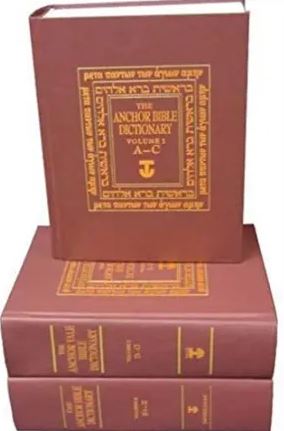Photo Credit: Courtesy of Tal Rogovsky
Saul was the first king of Israel. He was anointed by Samuel primarily to fight against the Philistines, a people who posed a threat to the survival of Israel as a nation. Saul was the father of four sons and two daughters.
Saul’s sons were Jonathan, Malchishua, Abinadab, and Esh-baal (1 Chronicles 8:33). 1 Samuel 14:49 adds Ishvi but omits the name of Abinadad from Saul’s genealogy. It is not known why Abinadad is not mentioned in 1 Samuel. Some scholars believe that he was not yet born when the genealogy in 1 Samuel was composed. However, 1 Samuel 31:6 says that Saul and his three sons died on Mount Gilboa fighting against the Philistines.
Saul also had two daughters. Their names were Merab, who was the first born and Michal who was Saul’s younger daughter (1 Samuel 14:49). Both women were offered in marriage to David.
Ishbaal survived the battle against the Philistines. After Saul’s death, Abner, the commander of Saul’s army, took Ishbaal son of Saul, and brought him over to Mahanaim. There, with the support of Saul’s army, Abner made Ishbaal king over all Israel. Ishbaal was forty years old when he began to reign over Israel, and he reigned two years (2 Samuel 2:8-11).
The name Ishbaal was known only from its mention in the book of 2 Samuel where it appears fourteen times. The name was not known outside the Bible until recently.
In an article published in the Bulletin of the American School of Oriental Research titled “The ’Išba‘al Inscription from Khirbet Qeiyafa,” Yosef Garfinkel and a group of archaeologists announced that an inscription found in Khirbet Qeiyafa during the 2012 excavation contains the name Ishbaal.
This is the first time the name Ishbaal appears outside the Bible. Since the inscription is dated to the 11th-10th centuries B.C., the discovery becomes an important addition to the many discoveries that help confirm the chronology of the biblical text, the development of the language of the people who lived in Canaan and, indirectly, this discovery serves to affirm that some of the biblical names were also common at the time these persons mentioned in the Bible lived.
The excavation at Khirbet Qeiyafa was conducted by Yosef Garfinkel and Saar Ganor. The site is located 30 kilometers (about 19 miles) southwest of Jerusalem. The site was destroyed in the 11th-10th centuries, a time consistent with the reigns of Saul and David.
According to Garfinkel, the inscription is inscribed in an early form of the alphabetic script. This early type of alphabetic script is called Proto-Canaanite or just simply Canaanite. The prophet Isaiah called the language spoken by the Israelites “the language of Canaan” (Isaiah 19:18).
The name in the inscription is ’šb‘l [bn] bd‘, “Ishbaal son of Beda‘.” The name beda‘ does not appear in the Bible. Garfinkel provides a probable explanation for the name. He wrote:
The name bd‘ is unique and is absent from ancient inscriptions and the Bible. Moreover, the root bd‘ is unknown from later periods of Hebrew. In Arabic, however, bd‘ is attested with the meaning “to produce, to invent, to begin,” while in Ethiopic it denotes “sudden action”. Thus, the name bd‘ is probably a hypocoristic (abbreviated) theophoric name where the theophoric element (the divine name) was dropped, meaning “[The deity] has created” (2015:230).
The name ’šb‘l appears fourteen times in the Hebrew Bible. The name is translated into English as Ishbaal, a name that means “man of Baal.” The biblical writers who were faithful Yahwists rejected the use of the name Baal, the Canaanite God, in Israelite names and as a result, they replaced the name Baal with the Hebrew word bosheth, a word that means “shame.”
The name Ishbosheth appears twelve times in the Hebrew Bible. Some English translations use the name Ishbaal where the name Ishbosheth appears:
“But Abner son of Ner, commander of Saul’s army, had taken Ishbaal son of Saul, and brought him over to Mahanaim” (2 Samuel 2:8 NRSV).
“But Abner the son of Ner, commander of Saul’s army, took Ish-bosheth the son of Saul and brought him over to Mahanaim” (2 Samuel 2:8 ESV).
There are several other examples of personal names in the Bible where the name Baal was replaced with bosheth or other names in order to remove any vestige of the name of the god of the Canaanites. The following are some of the names that were changed because of the presence of the name Baal.
Gideon
Because Gideon destroyed the altar of Baal and cut down the Asherah pole, Gideon received the nickname “Jerubbaal” (Judges 6:32). The name Jerubbaal means “Let Baal contend [against him]. Later on his name was changed to Jerubbesheth, a name that means “Let the shameful thing contend [against him]. The word besheth is another form of bosheth.
Meribbaal
Meribbaal was Jonathan’s son and Saul’s grandson (1 Chronicles 9:40). It is possible that the original name of Jonathan’s son was Meribaal, a name that means “Hero of Baal.” The name was changed to Meribbaal, a name that means “Opponent of Baal.” The name then was changed again to Mephibosheth, a name that means “From the Mouth of Shame.” The name Mephibosheth appears fourteen times in 2 Samuel.
Beeliada
Beeliada was a son of David born in Jerusalem (1 Chronicle 14:7). When he conquered Jerusalem, David took more concubines and wives from Jerusalem (2 Samuel 5:13). These women were Jebusites, one of the original inhabitants of Canaan. Thus, it is understandable that one of his sons would adopt a Canaanite name that included the name of Baal. The name Beeliada means “Baal Knows.” Because of the aversion to the use of the name Baal, David’s son’s name was changed to Eliada, a name that means “God Knows.”
Josheb-basshebeth
Josheb-basshebeth was one of the mighty men of David (2 Samuel 23:8 NRS) The name Josheb-basshebeth is considered to be corrupted. Dalglish (1962:804) says that the name Josheb-basshebeth is a corruption of the name Ishbaal. He bases his view on the Septuagint, which translates his name as Ishbaal. This correction has been accepted by a few English translations:
New Jerusalem Bible: “These are the names of David’s champions: Ishbaal the Hachmonite leader of the Three” (2 Samuel 23:8).
New American Bible: “These are the names of David’s warriors. Ishbaal, son of Hachamoni, was the first of the Three” (2 Samuel 23:8).
Conclusion
If the name Josheb-basshebeth is a corruption of Ishbaal, then the name that appears in the Ishbaal Inscription was a common name in the days of Saul and David. The use of Baal in the names of Israelites disappears after the time of David.
The Ishbaal Inscription contributes to a better understanding of the social and cultural background of the 11th-10th centuries in Judah. The name in the inscription reflects names found in the biblical text. The chronological placement of the inscription reflects the times of Saul and David. Thus, the Ishbaal Inscription demonstrates that some of the names that appear in the Bible were common names used by the people who lived in the Judean territory in the days of Saul and David.
NOTE: For other articles on archaeology, archaeological discoveries, and how they relate to the Bible, read my post Can Archaeology Prove the Bible?.
Claude Mariottini
Emeritus Professor of Old Testament
Northern Baptist Seminary
NOTE: Did you like this post? Do you think other people would like to read this post? Be sure to share this post on Facebook and share a link on Twitter or Tumblr so that others may enjoy reading it too!
I would love to hear from you! Let me know what you thought of this post by leaving a comment below. Be sure to like my page on Facebook, follow me on Twitter, follow me on Tumblr, Facebook, and subscribe to my blog to receive each post by email.
If you are looking for other series of studies on the Old Testament, visit the Archive section and you will find many studies that deal with a variety of Old Testament topics.
Bibliography:
Dalglish, E. R. “Jashobeam.” Interpreter’s Dictionary of the Bible. 2: 804. Nashville: Abingdon Press, 1962.
Garfinkel, Yosef et al. “The ’Išba‘al Inscription from Khirbet Qeiyafa.” BASOR 373 (2015) 217-33.

















Reblogged this on Talmidimblogging.
LikeLike
I noticed that Saul’s son’s name is listed as Esh- baal. Why the spelling difference from Ish-Baal?
Secondly, if Ish-Baal was as common as Smith and Jones in that day, then it appears that the specific identity of this individual and who they were related to might never be determined. Is that correct? Thanks!
LikeLike
Carlene,
Thank you for your comment. The name of Saul’s son appears in Chronicles as Eshbaal and in the book of Samuel as Ish-bosheth. The name Ishbaal never appears in the Bible.
Ishbaal is a tentative reconstruction of the name because the form “esh” is not very clear. Since the form “ish,” a word that means “man,” appears with his name, scholar have concluded that probably his name was Ishbaal and not Eshbaal. However, the dispute is not settled yet.
The name probably was not common in Israel. An Israeli scholar is preparing an article in which he will propose the identification of this person. Although I know his theory, I am not at liberty to mention his conclusions yet. I just can say that I like his conclusions.
Claude Mariottini
LikeLike
Dr.. Mariottini: Thanks for the fascinating information. This data helps bring life to this ancient people. From your comments I assume you believe OT the Hebrew language “evolved” around 850 or so BC? Do you trust the report of these archeologists? Does the uniqueness of the name add value to the “find” and if so could that be a conflict of interest? Are you aware of any extra-Biblical writings that use these name combinations? I guess one lesson is that, in the ancient world, the victors wrote the books and one should not believe everything that is written. John Hall
LikeLike
John,
Language is always evolving. Compare the English of the 1611 King James Bible with the English we use today. The Hebrew spoken in Israel today is different from the Hebrew of the Bible which in turn is different from the Paleo Hebrew used in pre-monarchic Israel.
Archaeologists do a good job in trying to understand their findings, primarily when those findings are found in legitimate excavations. As far as we know, this is the first time we find this name combination outside the Bible. This is the beauty of archaeology: archaeology reveals ancient life and culture that existed thousand of years ago.
Claude Mariottini
LikeLike
Dr. Mariottini: Thanks for your reply. Your guild reminds us that evolution of language is a central criterion for any Biblical conversation. We saw the word “Cool” change meaning within our lifetime. I recently read an article on the KJV that said the language used would have seemed as strange to the average English speaker in 1611 as it is to us today. It amazes me how an archeologists can find ancient writing and synthesize ideas through hard work and experience into rational historic and social insights. They can give us so much from so little.
John Hall
LikeLike
John,
That is the reason the work of archaeologists is so important. It takes them much effort and time to be able to work with the remains of past civilizations.
Claude Mariottini
LikeLike
http://mikrarevivim.blogspot.com/2015/06/blog-post_26.html
Dear Professor Mariottini,
A couple of days before your post, I was interviewed by Dr Lea Mazor (in Hebrew, see link above)
and came to the conclusion that the Jar inscription was addressed to Yoshoboam the commander of a platoon of David’s heroes. I am glad that you have mentioned his name, even thouth without the identification. I intend to write an English article and wonder how to to refer to your writing on the topic.
All the best
Professor Moshe Garsiel
garsiem@bezeqint.net
LikeLike
Dear Professor Garsiel,
Thank you for your comment. Your view on the Ishbaal Inscription is very intriguing. You can refer to my post just by using my name with a link to my post.
Whenever you publish the article, I would appreciate if you send me a reference to the journal. I want to read your article and make a reference to it on my blog.
Thank you for the link.
Claude Mariottini
LikeLike